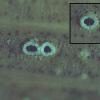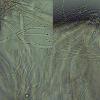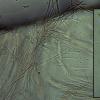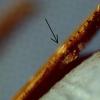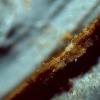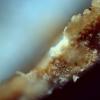
19-12-2025 10:10
Patrice TANCHAUDBonjour, récolte réalisée en milieu dunaire, a

18-12-2025 17:23
 Bruno Coué
Bruno Coué
Bonjour,je serais heureux d'avoir votre avis sur c

18-12-2025 21:17
Pol DebaenstThe identification took me to Byssonectria deformi

18-12-2025 18:07
Margot en Geert VullingsThese plumes were found on rotten wood.They strong

17-12-2025 18:35
 Michel Hairaud
Michel Hairaud
Bonjour à tous/Hi to everyone I am passing along

15-12-2025 15:48
 Danny Newman
Danny Newman
Melanospora cf. lagenaria on old, rotting, fallen

15-12-2025 15:54
 Johan Boonefaes
Johan Boonefaes
Unknown anamorph found on the ground in coastal sa

15-12-2025 21:11
 Hardware Tony
Hardware Tony
Small clavate hairs, negative croziers and IKI bb

15-12-2025 07:09
 Danny Newman
Danny Newman
indet. Rutstroemiaceae sp. on unk. fallen leavesMc
Stictis on Bamboo sps.
Hardware Tony,
01-06-2020 16:41
 At first I felt this was edging towards S. stellata, as I understand that this is the more common in the UK on herbaceous plants stems etc. However, I finally worked out that Bamboo is a grass and with it comes another possibility. The few records I can find and in Europe is that S. arundinacea is found on grasses and with Bamboo as one of the substrates. The spores are approx 145-150 x 2, the one measured here at 137µm is short of the final pinpoint end as you will see here. So longer. The apothecial margin to me isn't star shaped and mopre enclosed and rounded. The base of the asci did not chnage colour in Iodine, which cancels out S. radiata. Paraphyses are very slender with slight swelling at ends. Wondered if anyone esle had come across this species on grasses or Bamboo.
At first I felt this was edging towards S. stellata, as I understand that this is the more common in the UK on herbaceous plants stems etc. However, I finally worked out that Bamboo is a grass and with it comes another possibility. The few records I can find and in Europe is that S. arundinacea is found on grasses and with Bamboo as one of the substrates. The spores are approx 145-150 x 2, the one measured here at 137µm is short of the final pinpoint end as you will see here. So longer. The apothecial margin to me isn't star shaped and mopre enclosed and rounded. The base of the asci did not chnage colour in Iodine, which cancels out S. radiata. Paraphyses are very slender with slight swelling at ends. Wondered if anyone esle had come across this species on grasses or Bamboo.With thanks Tony Hardware
Paul Cannon,
01-06-2020 18:18
Re : Stictis on Bamboo sps.
Hello Tony
I have material of Stictis stellata on bamboo (from Hampshire), and despite its name the ascomata are usually not noticeably stellate. You probably have either this species or S. arundinacea; the easiest way to tell between the two is to section the fruit-bodies; S. arundinacea has a wall that is at least partially dark, while in S. stellata it is ± hyaline. They both have strongly white-pruinose rims, so don't confuse this with wall tissue.
Best wishes
Paul
Hardware Tony,
01-06-2020 21:39
Paul Cannon,
04-06-2020 10:43
Re : Stictis on Bamboo sps.
I can't really tell from these images. Ideally you need to split the bamboo along the grain and then whittle away using a double-sided razor blade (with obvious attention to health and safety) to get thin sections (as thin as possible). You can either mount them in water and observe using your compound microscope, or you might just see a dark line delimiting the fruit-body (if it is there) with the high power of a dissecting microscope.
Enjoy!
Paul
Hardware Tony,
04-06-2020 12:23

Re : Stictis on Bamboo sps.
Thanks Paul. I'll try, but if you don't hear from me again then the razor slipped.
There must be easier fish to fry.
Thks again Tony
There must be easier fish to fry.
Thks again Tony
Hardware Tony,
04-06-2020 13:24

Re : Stictis on Bamboo sps.
hi Paul,
Tried my bwest here but doubt it was good enough. Shaved down very gradually and these are the three images I manged to obtain on compund microscope at 40x and 100x last one. Just looks plain whitish to me, but expect not good enough.
Placed the cut along grain slice between two pieces of bluetack! Keep it intack while I skimmed it. I might have learnt something there.
Regards Tony
Tried my bwest here but doubt it was good enough. Shaved down very gradually and these are the three images I manged to obtain on compund microscope at 40x and 100x last one. Just looks plain whitish to me, but expect not good enough.
Placed the cut along grain slice between two pieces of bluetack! Keep it intack while I skimmed it. I might have learnt something there.
Regards Tony
Paul Cannon,
05-06-2020 18:13
Re : Stictis on Bamboo sps.
Still not completely sure but S. stellata seems to be a good hypothesis for the ID.
Pual

